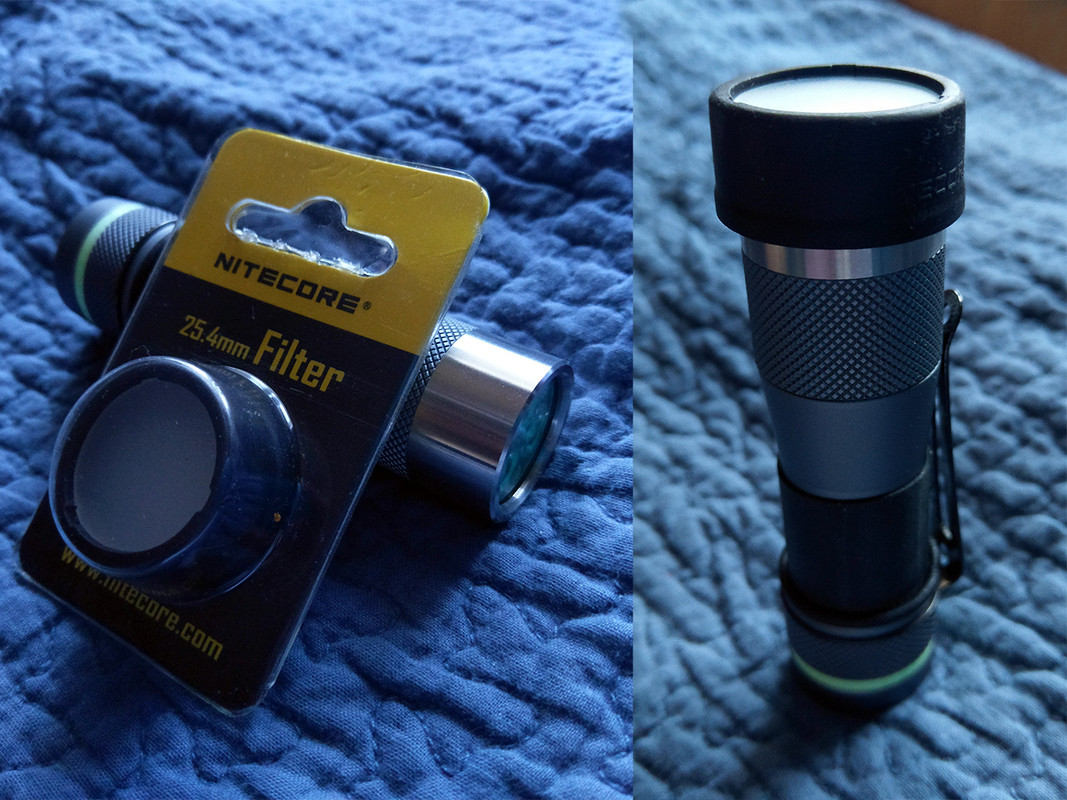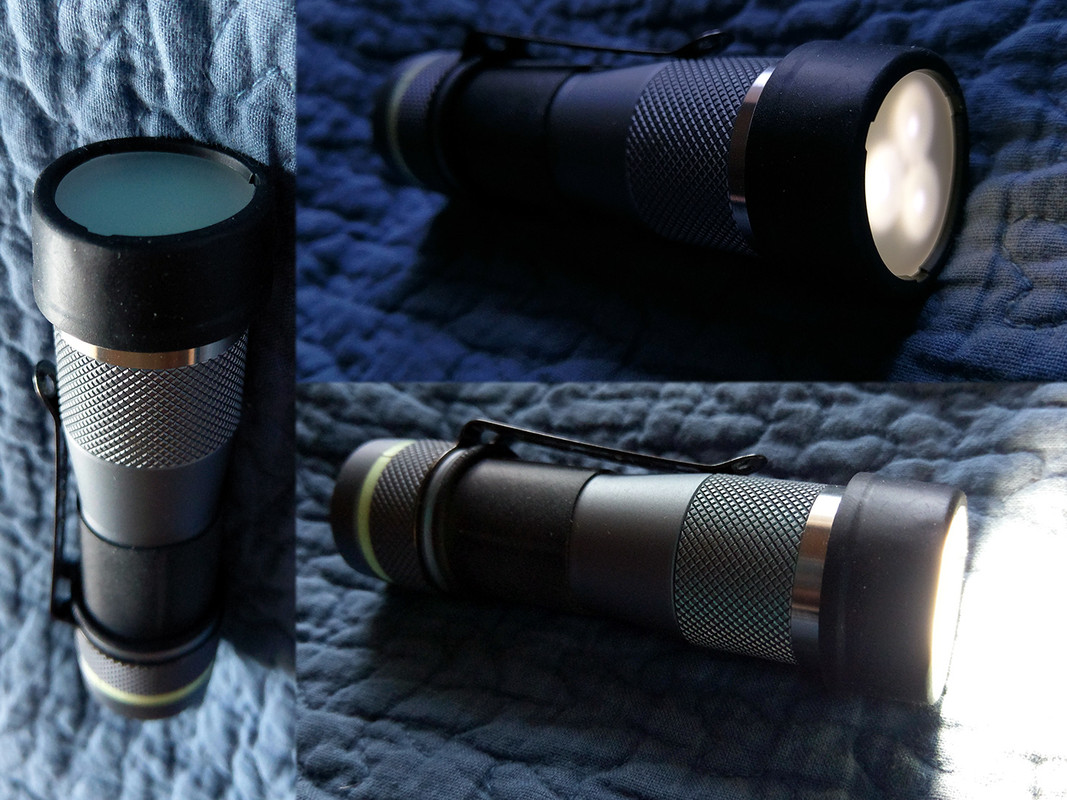D4V2 compared with FW3A:
Size - both lights are very similar in size. The FW3A is slightly smaller, and lighter, but not enough to make a very noticeable difference. The FW3A weighs about 100g with a Sony VTC6 battery installed, compared with 115g for the D4V2.
Ergonomics - the FW3A uses a rear electronic switch and is meant to be used with a cigar grip (fish the light out of your pocket with index and middle fingers then use thumb to press button). The D4V2 uses an electronic side switch and has grippy square knurling. The FW3A intentionally has no knurling on the center part of the battery tube so that when fishing the light out of your pocket your fingers will slide up the tube until they hit the tailcap.
Output - the D4V2 is a quad emitter light, while the FW3A is a triple emitter light. The D4V2 is also a bit more heavily built with heatsink fins and low resistance springs. This means the D4V2 is brighter (max output 4300 lumens compared to around 2800 for the FW3A). Both lights can use standard Carclo optics. This gives the FW3A more options since there seem to be more 20mm triple optic choices than there are 24mm quad optics.
Emitters - both lights are available in various different emitters. If you like neutral tint with max output, the D4V2 is better since their XPL HI 4000K has excellent tint and output. However, if you like high-CRI, the FW3A has noticeably better tint bins for the SST20 4000K 95CRI emitters than what Emisar is using. Lumintop's Nichia 219C high-CRI also has a very nice tint.
Options - both lights are available for sale in a variety of materials and colors and have many optional accessories available:
FW3A - 18350 tube, 18500 tube; colors: blue, olive, purple, bare, grey; materials: aluminum, copper, Ti-Cu, titanium; Glow gaskets for the optic; different clip options.
D4V2 - 18350 tube, 18500 tube; colors: grey, black, gold; materials: aluminum, Ti-Cu, brass; Optional tailcap magnet; switch retaining ring: flush or raised (greatly reduces accidental activation in pocket).
Firmware - both lights use Toykeeper's excellent Anduril firmware. However, the D4v2 tends to ship with a more recent version. The D4v2 also has the advantage that it can be reflashed to the very latest version of the firmware via a flashing kit available from International Outdoors. And because the driver has pogo-pin contact pads on the backside it can be reflashed without disassembling the head. In contrast, reflashing the FW3A requires desoldering and removing the driver then using an SOIC clip to attach the flasher to the MCU.
Driver channels: FW3A has 3-channel driver: 1+8+FET, while the D4V2 has a 2-channel driver 1+FET. This means the FW3A stays in regulation until 2.8 amps before going direct drive with the FET, while the D4V2 only regulates up to 350 millamps. This means the FW3A's driver is slightly more efficient at intermediate modes up to 2.8 amps.
Microprocessor: ATiny85 microprocessor on the FW3A, while the D4V2 has a more powerful ATiny 1634 with twice the memory. This doesn't matter much out of the box, but the D4V2 has more memory for possible future firmware upgrades.
Aux Bezel LEDS: The D4v2 has very pretty colored bezel LEDs. You can change the colors and brightness all via firmware, and can even have them work as a battery indicator. The Ti-Cu and Brass D4v2 also have a white switch boot with LEDs under the boot in addition to the bezel LEDs. These aux LEDs look really cool and give the light an extremely futuristic look. The FW3A does not come with any aux LEDs. You can order an aux LED board for the FW3A from Lexel, but you'll have to install it yourself and even then it won't be able to change colors like the D4v2's aux LEDs.
Accidental pocket activation: The FW3A has a large metal tailcap switch that is quite easy to accidentally depress. This can be fixed with a simple mod to the interior of the switch and/or by gluing a washer around the button. The D4V2 is available with a raised switch boot retaining ring that makes it very unlikely the light will activate accidentally in the pocket. The latest models of D4v2 also come with more recent firmware that includes more protection against accidental activation than the firmware version in the FW3A.
Quality Control: The FW3A has an inner contact tube that sits inside the outer battery tube. This is what lets the light have an electronic switch in the tailcap. However, it is a bit finicky and users have reported many more issues with the FW3A than with the D4v2's more conventional design.
My opinion: I like both lights. But as a personal preference, I think I prefer grippy sideswitch lights to the slippery cigar grip. I prefer the D4v2 over the FW3A.





